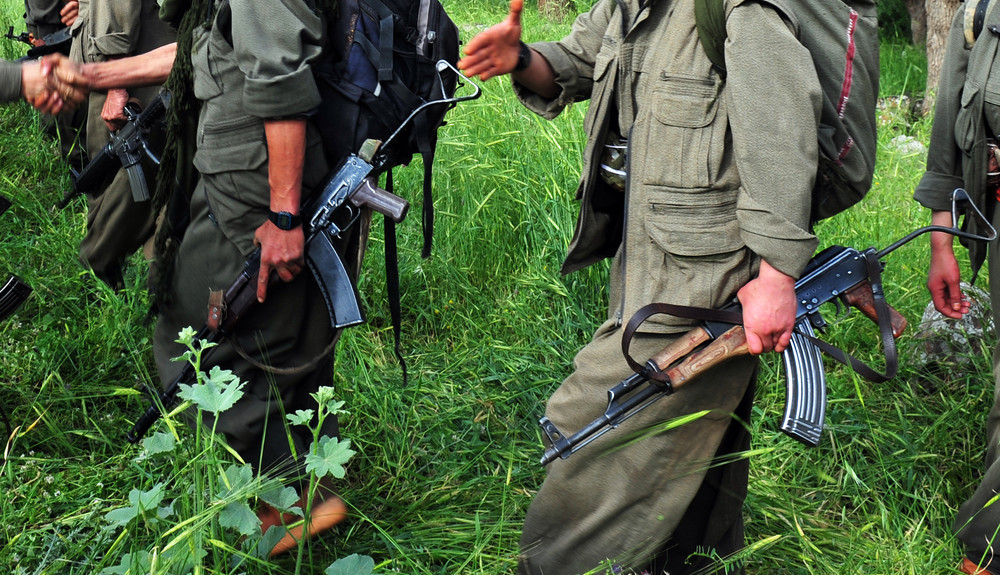Just the other day, a major American newspaper — the Los Angeles Times — published a story titled “In Syria, militias armed by the Pentagon fight those armed by the CIA“. Its thesis is quite apparent right in the lede (not to mention the headline):
Syrian militias armed by different parts of the U.S. war machine have begun to fight each other on the plains between the besieged city of Aleppo and the Turkish border, highlighting how little control U.S. intelligence officers and military planners have over the groups they have financed and trained in the bitter five-year-old civil war.
The fighting has intensified over the last two months, as CIA-armed units and Pentagon-armed ones have repeatedly shot at each other while maneuvering through contested territory on the northern outskirts of Aleppo, U.S. officials and rebel leaders have confirmed.
In mid-February, a CIA-armed militia called Fursan al Haq, or Knights of Righteousness, was run out of the town of Marea, about 20 miles north of Aleppo, by Pentagon-backed Syrian Democratic Forces moving in from Kurdish-controlled areas to the east.
Some experts, however, are calling this claim doggerel and/or nonsense. Like Syria-focused reporter Sam Heller, who expressed his counterpoint on the military blog War on the Rocks in explicit detail and refuted the distressing assertion by painting a vivid picture (through words and a map) of the congested and volatile situation in the troubled nation.
Here’s how he opens it up:
This is complicated, but bear with me. The Kurdish-dominated Syrian Democratic Forces (SDF) are not a monolithic force. Like nearly every other faction in Syria, they’re spread across an archipelago of enclaves nationwide. The SDF units clashing with Syrian rebels reportedly supported by the CIA are not supported by the Pentagon —they’re from a different enclave. The U.S. military is exclusively supporting the SDF in northeastern Syria on the other side of the Euphrates River. The Pentagon-backed SDF east of the Euphrates is fighting the self-proclaimed Islamic State, not rebels with or without U.S. backing.
That’s the entry level course. You could simply believe him and take his word for it, or you could click here and read his full explanation. Keep in mind, however, that comprehension is in no way guaranteed, but you can give it a shot.
After the heavy exposition he does make this submission, although it’s still completely consistent with his initial claim, in that NO, the CIA’s people are NOT fighting the Pentagon’s people — directly, that is:
So yes, it is technically true that the SDF receives U.S. Department of Defense support and one of its components is fighting Arab and Turkmen rebels, some of whom received CIA backing. But the factions of the SDF that are fighting these rebels are not Pentagon-backed, so we’re not seeing the sort of interagency warfare the story implies.
Oh, we’re sorry! There was a “TL:DR” all along! Enjoy:
So, to sum up: The non-Pentagon-backed SDF are fighting the CIA-backed northern Aleppo rebels, who are fighting alongside Pentagon-backed train-and-equip rebels against the Islamic State. The CIA-backed rebels are not fighting the Pentagon-backed SDF. They are fighting a different faction that does not enjoy U.S. support (and may have actually recently enjoyed Russian support). And the Pentagon-backed SDF is fighting the Islamic State in eastern Syria, half a country away.
Obviously, this is not an easy thing to explain properly, but I hold the U.S. government responsible for doing a poor job making these politically salient distinctions between its various proxies. I hope this doesn’t prejudice my access to various U.S. government spokespeople, but the official comment I’ve gotten to date on, for example, which section of the SDF receives Pentagon support has typically been muddled and unhelpful.
Got it?




































